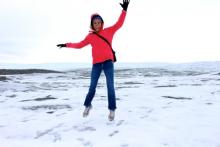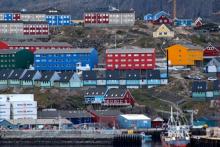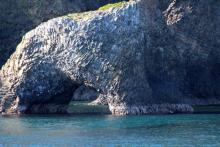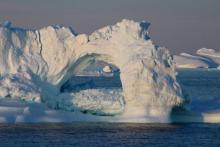What Are They Doing?
Team researchers investigated air-surface chemical interactions in the Arctic, and how these might evolve in future climates. Their efforts were part of the Ocean, Atmosphere, Sea Ice, Snowpack (OASIS) program – an international program that involves scientists from the United States, Canada, France, Germany, Italy, and the UK.
To gather data, the team used state-of-the-art chemical and biological sensors, micrometeorological instrumentation, Lidars, and tethered balloons to measure chemical and biological exchanges between the atmosphere and ice, ocean, and snow surfaces. The study focused on the impacts of these chemical reservoirs on tropospheric chemistry, climate, and their feedbacks in the Arctic. By seeking the answer to key questions about the nature of these surfaces, including how, where, and which chemical substances and aerosols are processed and activated in snow surfaces, the team pursued big-picture climate issues and contributed to predictions about climate change in the arctic.
Where Are They?
For this project, the research team flew to Barrow, a small community of approximately 4,500 people on the northern coast of Alaska. The OASIS 2009 field campaign was supported through the Barrow Arctic Research Center (BARC) (www.arcticscience.org/), and the instrumentation was located a short walk from the laboratory, in the clean air research area outside Barrow.
Latest Journals

Harry Beine is an associate researcher in the Land, Air, and Water Resources Department at the University of California Davis. His current research focuses on how snow-atmosphere interactions affect global change, and he coordinates the international, multi-disciplinary Ocean, Atmosphere, Sea Ice, Snowpack Interactions (OASIS) program.





